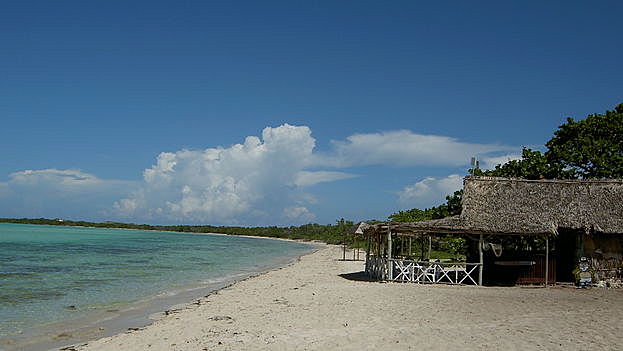
![]() 14ymedio, Havana, 7 November 2022 — The coastal keys of north Ciego de Ávila are to become a territory reserved exclusively for tourism. A new law will prevent access, for the majority of Cubans, to one of the most privileged areas of the Island and establishes that access will be limited “only to pre-booked tourist activity or activity authorised by local government, as well as people employed in the zone and other authorised personnel”.
14ymedio, Havana, 7 November 2022 — The coastal keys of north Ciego de Ávila are to become a territory reserved exclusively for tourism. A new law will prevent access, for the majority of Cubans, to one of the most privileged areas of the Island and establishes that access will be limited “only to pre-booked tourist activity or activity authorised by local government, as well as people employed in the zone and other authorised personnel”.
The ruling, published in the Gaceta Oficial on Friday 4 November, declares the area (which includes Cayo Guillermo, Cayo Coco and the keys of Antón Chico, Antón Grande, Romano y Paradón Grande and all areas of the municipality of Morón) as a zone of special regulations — of economic development in the category of Territory for Preferential Tourist Use.
The declared objective is to “develop the tourist activities of sun-seeking, beach life, maritime sports and nature, all with a focus that is sustainable, harmonic and well-planned, oriented towards fostering productivity and development of the municipality to elevate the quality of life for its population” — although it’s obvious from this that local people will not be allowed to enter freely into the area unless they are workers authorised by the provincial governor, who is now in charge of the procedure for access applications.
In recent years the government has developed extended regulations for the protection of areas considered, in a decree of 2015, as strategic for protected tourism, through which the Institute of Physical Planning proposes to the Council of Ministers the areas to receive a differentiated treatment based on the various interests of: the environment, history, culture, the economy, defence, security and interior order.
In 2020, in fact, 14 zones of this type were declared on the Cuban coastline, but the regulations were for the most part directed at the control of fishing or the prevention of unauthorised removal of flora and fauna. A year later, in July 2021, six more were established in different municipalities of the Island. The harshest restrictions in those cases went from possible expropriations of homes — with compensation — if the land was considered optimal for tourism, to aesthetic limitations for the conservation of the area.
Also, this year 2022, restricted areas were established: in June, in Soroa and in July, in Playa Larga and in Ciénaga de Zapata — one of which already required authorisation for access to nature areas not delineated as public access. But prohibition of entry without permission has not yet been imposed in any of these zones like it has up until now in Ciego de Ávila.
The policy developed for the northern, key-scattered, area contains a long list of rules. Apart from those, what stands out is the ruling that the only things permitted in this area are: “the building of homes associated with the development of golf courses, motels for workers, and homes designed for accommodating foreign specialists in the tourist sector, starting from basic means”.
There will also be temporary camping sites for construction workers and for those working in administration or looking after protected areas, as well as for security staff.
The rest of the regulations concern energy saving, hygiene and security measures, environmental protection and conservation of native species, as well as the assigning of responsibility for the completion of each measure to suitably competent authorities or to the companies who manage each activity.
Translated by Ricardo Recluso
____________
COLLABORATE WITH OUR WORK: The 14ymedio team is committed to practicing serious journalism that reflects Cuba’s reality in all its depth. Thank you for joining us on this long journey. We invite you to continue supporting us by becoming a member of 14ymedio now. Together we can continue transforming journalism in Cuba.
